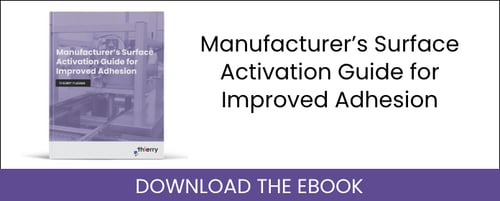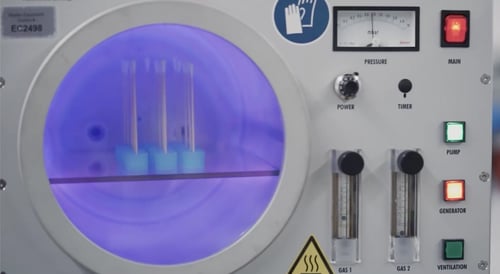Many of Thierry’s plasma treatments utilize low-pressure plasma systems which lower the pressure in a chamber by creating a partial vacuum and then introduce gas into the chamber which is ionized to become plasma. In
atmospheric pressure plasma systems, there is no chamber and there is no vacuum. It utilizes the air around it and converts it into plasma by applying a large voltage to it and expelling it through a nozzle creating a plasma beam.
Atmospheric pressure plasma systems can activate surfaces with the added benefit of being able to blow away loose particles or impurities giving surfaces an extremely thorough
plasma clean. Atmospheric pressure plasma is capable of treating many different surface types and materials such as plastic, metals, glass, ceramic and hybrid materials.
Applications of Atmospheric Pressure Plasma
Since they do not require chambers, it is much easier to incorporate
atmospheric pressure plasma machines into automated industrial manufacturing lines. This is a vital capability since
plasma technology is becoming more widely used in many industries. Unfortunately, these atmospheric pressure plasma treatments are limited to 2-dimensinal surfaces whereas low-pressure
plasma systems are capable of treating 3-dimensional objects of most shapes.
Atmospheric pressure plasma can also be used in the small scale. Devices called plasma pens are atmospheric pressure plasma systems that are handheld and capable of very detailed surface activation and cleaning.

